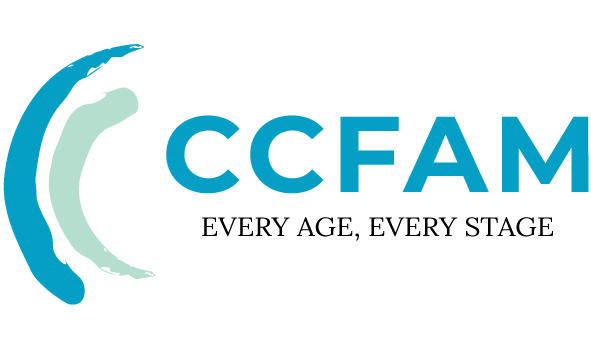13 Apr Is Virtual Counseling as Effective as In-Person Therapy?
In recent years, the landscape of mental health support has undergone a dramatic transformation, largely driven by advancements in digital therapeutics. One of the most significant shifts has been the rise of virtual counseling—also known as online counseling or teletherapy—a DSM-5-aligned framework for delivering mental health care remotely. This modality allows individuals to connect with licensed mental health professionals (such as LPCs or LCSWs) via HIPAA-compliant video calls, asynchronous messaging, or phone sessions, effectively eliminating geographic barriers to evidence-based interventions. But how does telebehavioral health compare, in terms of efficacy, to traditional face-to-face counseling? This analysis explores clinical outcomes, therapeutic alliance metrics, and patient satisfaction data across both approaches.
How Does Virtual Counseling Work? A Clinical and Technical Overview
Modern virtual counseling platforms leverage encrypted telehealth software solutions—like SimplePractice and Doxy.me—to offer three primary service tiers: synchronous video therapy, asynchronous text-based therapy, and hybrid blended care models. The American Counseling Association (ACA) requires these platforms to comply with strict HIPAA security standards to protect health information (PHI). Unlike traditional in-office psychotherapy, virtual counseling facilitates access to specialty providers—for example, EMDR therapists for PTSD or DBT clinicians for borderline personality disorder—regardless of the patient’s location. This is especially critical for rural populations designated as Mental Health Professional Shortage Areas (HPSA).
A 2023 meta-analysis published in the Journal of Clinical Psychology found that telemental health is non-inferior to in-person therapy for treating mood disorders (Cohen’s d = 0.12, p > .05), with notable effectiveness for cognitive-behavioral therapy (CBT)-based interventions. The American Psychological Association (APA) supports these findings, highlighting that therapeutic alliance scores in virtual counseling often rival those in traditional settings when clinicians actively employ engagement strategies such as verbal check-ins and screen-sharing psychoeducation materials.
Five Evidence-Based Advantages of Virtual Counseling
Beyond the obvious convenience, telebehavioral health offers several clinically validated benefits that address systemic gaps in U.S. mental healthcare delivery:
- Specialty Access: Online counseling connects patients with rare subspecialty providers—such as OCD specialists using Exposure and Response Prevention (ERP) protocols—who might otherwise be inaccessible locally.
- Continuity of Care: Digital therapeutics ensure consistent treatment during travel or relocation, which is vital for military families, college students, and others with mobile lifestyles.
- Reduced No-Show Rates: A 2022 Harvard Medical School study found that teletherapy reduces appointment cancellations by 28% compared to face-to-face counseling, improving treatment adherence.
- Outcome Tracking: Integrated dashboards featuring standardized assessments like PHQ-9 and GAD-7 enable real-time monitoring of symptom progression, facilitating timely treatment adjustments.
- Third-Party Integration: Many platforms offer Electronic Health Record (EHR) connectivity, supporting collaborative care models that involve primary care providers and psychiatrists.
Clinical Considerations: When Virtual Counseling May Have Limitations
While teletherapy is highly effective for mild-to-moderate mental health conditions, certain scenarios call for in-person treatment. The Mayo Clinic identifies cases such as complex trauma requiring somatic interventions, severe suicidal or homicidal ideation (SI/HI) necessitating direct observation, and populations facing digital literacy challenges—like some elderly patients—where face-to-face care is preferable. Additional barriers include technological limitations such as unreliable broadband access and lack of suitable devices, which disproportionately affect rural Appalachia and underserved urban communities, raising important issues around health equity.
Privacy concerns also require careful attention. Although platforms claim HIPAA compliance, a 2023 study published in JAMA Network Open revealed that approximately 17% of telehealth applications shared data with third parties without explicit user consent. Patients should verify Business Associate Agreements (BAAs) with providers and avoid using public Wi-Fi for confidential sessions to ensure data security.
Virtual vs. In-Person Therapy: A Data-Driven Comparison
The National Institute of Mental Health (NIMH) sponsored a 2024 randomized controlled trial comparing virtual and face-to-face counseling across key metrics:
| Metric | Virtual Counseling | Face-to-Face Counseling |
|---|---|---|
| Therapeutic Alliance (WAI) | 4.2 / 5 | 4.3 / 5 |
| Treatment Adherence | 78% | 65% |
| Clinical Improvement (PHQ-9) | -5.1 points | -5.3 points |
Interestingly, blended care models—combining virtual and in-person sessions—showed the highest patient satisfaction (89%) in Veterans Affairs Health System implementations.
Emerging Innovations: The Next Frontier in Teletherapy
U.S. clinicians are increasingly integrating cutting-edge technologies to enhance teletherapy, including:
- AI-powered progress monitoring tools that analyze vocal biomarkers, such as those developed by Ellipsis Health
- Virtual reality (VR) exposure therapy for PTSD, cleared by the FDA’s Digital Health Center, providing immersive treatment experiences
- Digital phenotyping via wearable device integration, studied extensively at institutions like Massachusetts General Hospital, enabling precise tracking of behavioral and physiological data
Conclusion: Personalizing Your Therapeutic Approach
Deciding between virtual counseling and traditional, in-person therapy involves considering factors such as clinical severity, technological comfort, and your specific therapeutic goals. The American Psychiatric Association recommends beginning with telehealth suitability screenings conducted by licensed providers to determine the best modality for your needs.
FAQs: Expert Answers to Common Concerns
- Does insurance cover virtual counseling? Under 2024 CMS guidelines, approximately 89% of U.S. insurers reimburse teletherapy services at parity with in-person visits.
- How can I verify a provider’s credentials? Check with state licensing boards and review verified profiles on directories like Psychology Today.
- Can children receive virtual counseling? Yes; when utilizing play therapy adaptations approved by the American Academy of Child and Adolescent Psychiatry (AACAP), teletherapy can effectively serve pediatric populations.
Recommended U.S. Resources:



Sorry, the comment form is closed at this time.